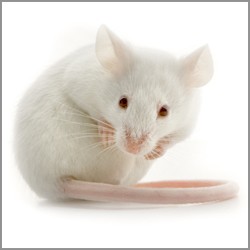Identifying a Rodent Infestation
Identifying a Rodent Infestation
R.M.B. Extermination Inc. responds to all your rodent infestation problems in the Greater Montreal area. Here are some tips to help you determine if your house is infested, and the type of infestation.
-
Mouse
-
Sewer Rat
-
Raccoon

Mouse
Appearance
The house mouse is approximately 18 cm long. It is dark brown or grey and its tail is covered with dark hair. It has a pointed snout, large ears and small black eyes. The deer mouse has a brown back and white belly. It also has large ears and eyes.
Signs of Infestation
Greasy stains, tiny feces, chewing marks and holes 4 cm in diameter are all signs that you have mice in your home.

Sewer Rat
Appearance
The sewer rat is grey-brown and about 45 cm long. It has small black eyes and a hairless tail that can reach 15 to 20 cm. Its snout is more or less square.
Signs of Infestation
Greasy traces along baseboards, excrement (2 cm), holes in wood, chewed electric wires or food indicate the presence of a rat in your home. If you often hear noises in your closet or in the house while you sleep, this is also a sign. Rat urine can be detected using ultraviolet light.

Raccoon
Appearance
Raccoons are very easy to spot. The raccoon has a bushy tail with black and white stripes and a black mask lined with white around its eyes. Its fur is usually grey-brown. It measures 60 to 90 cm and can weigh from 10 to 30 pounds.
Signs of Infestation
Raccoons will go through garbage cans and tear apart all the contents. If your outdoor garbage cans are overturned and the bags are shredded, this can be a sign of raccoon activity. Holes from 7 to 10 cm wide are also a good sign the culprit is a raccoon.


